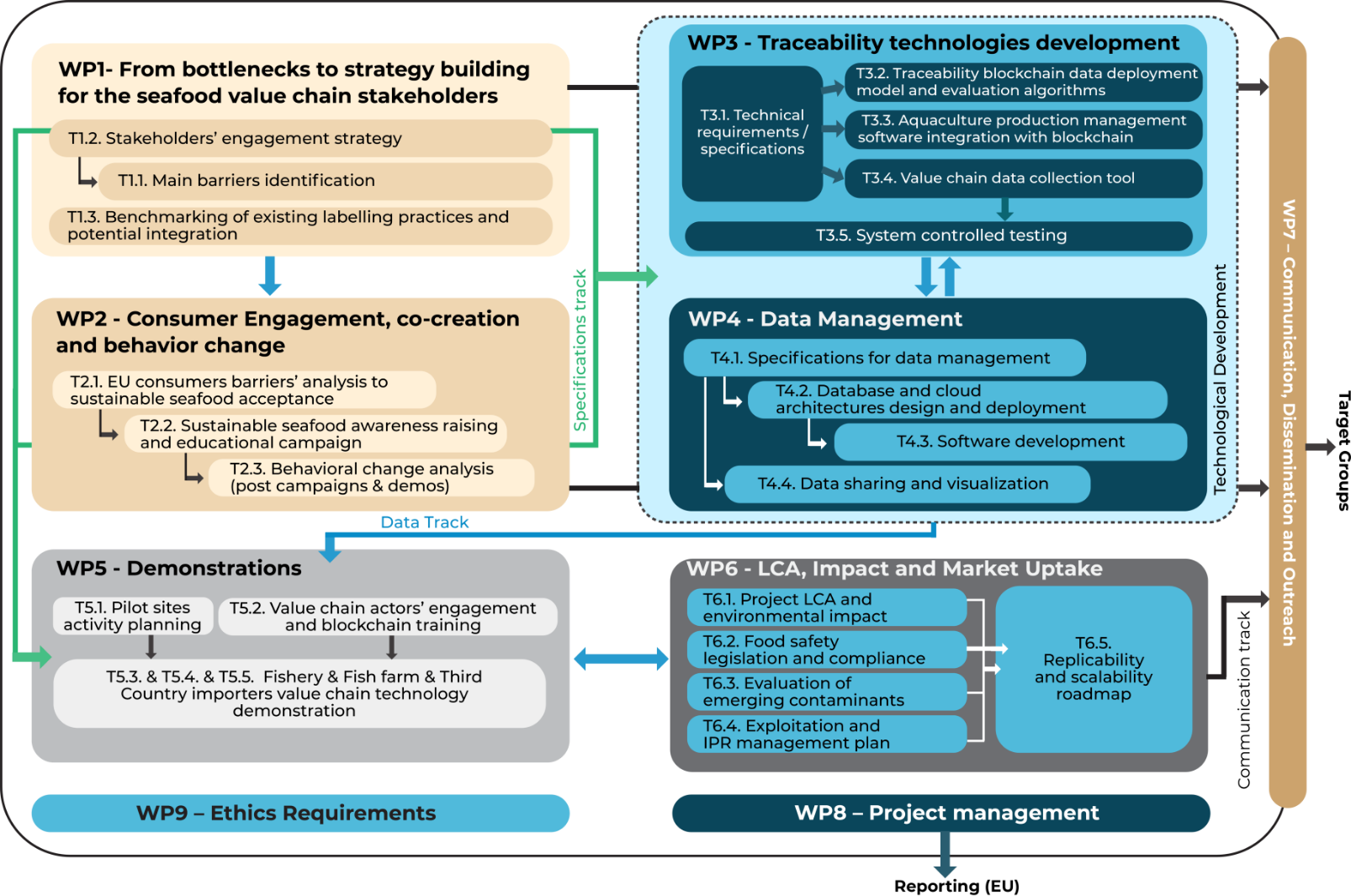ACTIVITIES
ACTIVITIES
SEA2SEE project has settled a coherent work program to pursue its ambitious objectives. Expertise and methods from the Natural Sciences, Social Sciences and Applied Sciences are applied to support the development and utilization of the novel digital technologies aimed at increasing seafood traceability and transparency in the seafood chain, to create trust and improve seafood acceptance by consumers.
WP1: From bottlenecks to strategy building for the seafood value chain stakeholders
A preparatory step to ensure effective stakeholder engagement. It aims to pave the way for the interaction with different seafood value chain actors (WP5), co-creation approach to a technology design that is tailored to the needs of the seafood value chain actors and allows the alignment of technology innovation (introduced in WP3 and 4) with environmental and food safety policies and existing certification practices and labels.
WP2: Consumer Engagement, co-creation and behaviour change
Identification of the knowledge gaps and respective difficulties of consumers to recognize sustainable seafood and develop ways to overcome the barriers before their acceptance and involvement. WP2 will trigger a transition towards more sustainable options for seafood consumption, both farmed and fished, and will implement a comprehensive strategy for engaging the consumer in taking better informed decisions.
WP3: Traceability technologies development
To build a technology infrastructure network based on blockchain that would allow any authenticated actors of the supply chain, and/or that would analyse data, to share data with complete auditability to create the foundation of seafood product traceability.
WP4: Data Management
To design the cloud architecture, databases and software as well as their deployment to perform all the process of data capture, transformation, processing, storing and output.
WP5: Demonstrations
Deploy WP3 and WP4 technological innovations in real-life environments.
- Fishery value chain technology demonstration
- Fish farm value chain technology demonstration
- Third country importers demonstration
WP6: Life Cycle Analysis, Impact and Market Uptake
Еnsures that the solutions developed by the project as well as the obtained results are reliable and efficient, environmentally friendly, socially accepted and techno-economically feasible. The sustainability and risk assessment of the adopted technologies and approaches will be faced in an integrated manner while taking into account the whole Sea2See life cycle.
WP7: Communication, Dissemination and Outreach
Activities directed at maximizing the project’s visibility, supporting the engagement of stakeholder groups in a continuous dialogue, raising the awareness of the project and its topics among the wider public, and promoting the activities, tools and outcomes of the project.
WP8: Project Management
Ensures smooth project coordination and management (scientific, technical, financial and legal), effective communication among partners and with the EC, quality assurance, well established supervision and monitoring practices.
WP9: Ethics requirements
This work package sets out the ethics requirements that the project must comply with (international, EU, national). Ethics Board is created.
The work plan of SEA2SEE is structured around 9 Work Packages aligned with the structure presented in the PERT chart.

The highest volume of work is concentrated in the consumer engagement work package (WP2), followed by the two technological development work packages (WP3 & WP4) WP1 & WP2 involve the attention of most partners as far as identifying, engaging and educating consumers and industry stakeholders all over Europe is concerned. The rest of the work packages comprise elements like methodological work, sustainability, exploitation and scalability, and demonstrations. Horizontal work packages account for the overall project management, communication and dissemination of its results, ethics issues, and run throughout the entire lifetime of the project.
